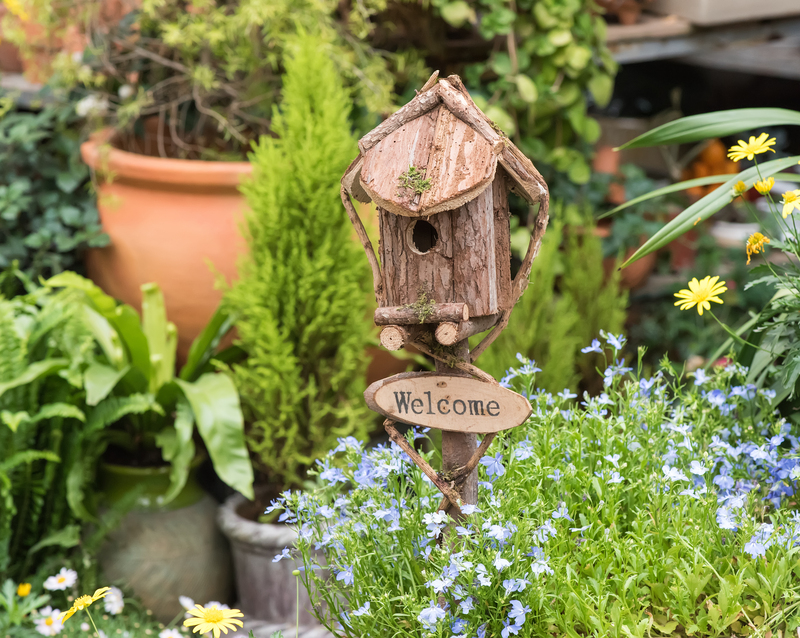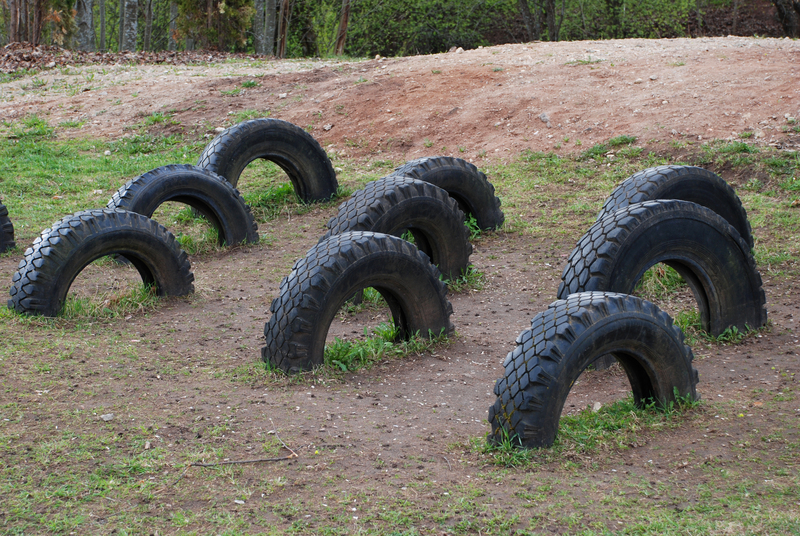Clear the Clutter: Your Guide to Minimalist Living
Are you feeling overwhelmed by your possessions? Minimalist living is more than just a trend--it's a lifestyle that empowers you to focus on what truly matters. By learning how to clear the clutter from your home and mind, you open up space for peace, purpose, and productivity. In this comprehensive guide, discover actionable steps, practical tips, and the transformative power of embracing a minimalist life.
What is Minimalist Living?
Minimalism is a philosophy that encourages intentionality and simplicity. By owning fewer possessions and eliminating excess, minimalists gain clarity, happiness, and freedom. Instead of chasing after material things, this lifestyle prioritizes experiences, relationships, and growth. Clearing the clutter--both physical and mental--helps you to live a more meaningful and fulfilled life.
Key Principles of Minimalist Living
- Intentionality: Every item you keep should serve a clear purpose or bring joy.
- Quality Over Quantity: Focus on fewer, high-quality possessions instead of accumulating more.
- Mindful Consumption: Make conscious decisions about what enters your space.
- Self-Awareness: Understand your real needs versus wants.
- Freedom: Letting go of excess creates time and freedom for the things that truly matter.

Benefits of Embracing Minimalist Living
Making the decision to clear the clutter can have profound and lasting benefits. Some of the top rewards of living minimally include:
- Less Stress: A tidy, organized space can significantly reduce anxiety and overwhelm.
- More Time: With fewer things to clean, manage, or repair, you free up time for hobbies, loved ones, and self-care.
- Financial Freedom: Buying less means more savings and less debt.
- Environmental Impact: Minimalists generate less waste and make sustainable choices.
- Mental Clarity: A clutter-free environment leads to sharper focus and improved creativity.
- Enhanced Relationships: Focus on people and experiences instead of material things.
The First Step: Decluttering Your Space
Ready to begin your journey towards minimalist living? It all starts with clearing the clutter.
How to Start Decluttering - Room by Room
Tackling the entire house at once can be intimidating. To make the process manageable, break it down by space:
- Bedroom: Remove unnecessary clothing, papers, and items hidden under the bed. Keep only the essentials for rest and relaxation.
- Living Room: Limit decorative items, clear off surfaces, and designate storage spaces for remotes, magazines, and electronics.
- Kitchen: Donate duplicate utensils, get rid of expired food, and keep countertops clear for meal preparation.
- Bathroom: Discard empty products, old towels, and beauty items you no longer use.
- Closet: Sort clothing by season and function; donate or recycle what you no longer wear.
Decluttering Methods and Techniques
There are several popular techniques to help clear the clutter efficiently and mindfully:
- KonMari Method: Assess each object's value by asking if it "sparks joy." If not, thank and release it.
- Reverse Hanger Trick: Hang clothes backward; after six months, items not turned forward can be donated.
- Four-Box Method: Label boxes as "keep," "donate," "sell," and "trash." Handle items accordingly.
- One-In, One-Out Rule: For every new item you bring in, remove one existing item.
Minimalism Beyond the Home
Clearing the clutter isn't just about your physical space. True minimalist living extends into all aspects of life, including your schedule, digital world, finances, and even your mindset.
Digital Decluttering
- Delete unused apps and files on your devices.
- Organize your digital photos, emails, and documents.
- Limit screen time to create more room for intentional living.
Streamlining Your Schedule
- Prioritize commitments that align with your values.
- Say "no" to activities that drain your energy without meaningful benefit.
- Block out free time for rest and reflection.
Financial Minimalism
- Assess spending habits and cut unnecessary expenses.
- Resist impulse buys by adopting a "wait before purchase" practice.
- Invest in experiences and high-quality lasting items instead of trends.
Maintaining a Minimalist Lifestyle
Once you've managed to clear the clutter, the next challenge is maintaining your new way of life. Consistency is key to reaping the long-term benefits of minimalist living.
Tips for Staying Clutter-Free
- Regularly review your possessions every few months.
- Revisit your goals and vision for minimalism when tempted to accumulate.
- Set boundaries with incoming items--gifts, purchases, and freebies.
- Practice gratitude for what you have, reducing the urge to acquire more.
- Involve your household; minimalism is easier when everyone participates.
Minimalist Mindset: The Power of Letting Go
Letting go of possessions can be emotional. Sometimes, our things feel like a part of our identity, memories, or achievements. But releasing what no longer serves you can be deeply liberating.
Ask yourself:
- "Does this item bring me happiness or support my current needs?"
- "Would I repurchase it now if I didn't already own it?"
- "Am I keeping this out of guilt or obligation?"
Minimalism isn't about living with nothing; it's about making space for what counts.
Minimalism for Families
Many people assume minimalist living is only for singles or couples, but it can work wonders for families too. Living with less can mean more quality time, less stress over cleaning, and children who learn the value of things and experiences.
Strategies for Family Minimalism
- Involve kids in decluttering; teach them thoughtful decision-making about what to keep.
- Streamline toys, clothing, and books to what your family actually uses and loves.
- Create designated spaces for belongings, making it easier for everyone to tidy up.
- Focus on shared experiences like outdoor activities or family meals instead of physical gifts.
Minimalist Aesthetics: Decorating a Clutter-Free Home
Your physical environment influences your mood and motivation. A minimalist home embraces open space, natural light, and simplicity. Here's how to achieve that minimalist look:
- Favor furniture with clean lines and neutral colors.
- Use multifunctional pieces to maximize space.
- Add natural elements like plants and wood for warmth.
- Let artwork or meaningful objects be your statement pieces.
- Keep surfaces clear and organized.
Remember: Decorate with intention. Every item should enhance your living experience.
Common Myths About Minimalist Living
- Minimalism is about deprivation: In reality, it's about abundance--of time, joy, and freedom.
- You must own a tiny home: Minimalism is for any space, big or small.
- It's expensive: Actually, you'll likely spend less and save more in the long run.
- Minimalists don't care about aesthetics: Many find minimalist homes beautiful and inviting.

Taking the Next Steps Towards a Minimalist Life
Clearing the clutter is just the beginning of a rewarding journey. With each step, you'll uncover more about your personal values, passions, and what makes you truly happy. Minimalist living creates space for you to thrive--mentally, physically, and emotionally.
Ready to simplify?
- Set a clear vision of your ideal minimalist life.
- Start small--pick one drawer, one shelf, or one category.
- Commit to regular decluttering sessions.
- Enjoy the freedom and joy that comes from a life lived with intention.
With every item released, you gain a little more space for what truly matters. By choosing to clear the clutter, you open the door to a brighter, more purposeful future.
Final Thoughts: Minimalism is a Personal Journey
There's no single "right" way to practice minimalist living. The goal is to design a life that feels light, fulfilling, and uniquely yours. Take what resonates from this guide, and remember that minimalism is about quality--not quantity--of both things and experiences.
Whether you aim to clear the clutter from your space, your schedule, or your mind, the minimalist path is endlessly rewarding. Start today, and see how a simpler life creates more room for joy.
Frequently Asked Questions About Minimalist Living
- How do I begin living minimally?
Start by decluttering a single area. Set rules for new purchases. Reflect on what's genuinely important to you. - Can I practice minimalism with a busy family?
Yes! Involve everyone and focus on shared priorities. Minimalism can make family life less stressful and more meaningful. - Does minimalist living work in a small apartment?
Absolutely. In fact, smaller spaces often benefit most from a minimalist approach. - What if I regret decluttering something?
It's natural, but rare. Focus on the freedom you gain. Letting go teaches us to value experiences over possessions. - Is minimalism right for everyone?
While it looks different for each person, anyone can benefit from clearing clutter and living with intention.
Clear the clutter and embrace a life of simplicity, intention, and freedom--one step at a time. Begin your minimalist living journey today!